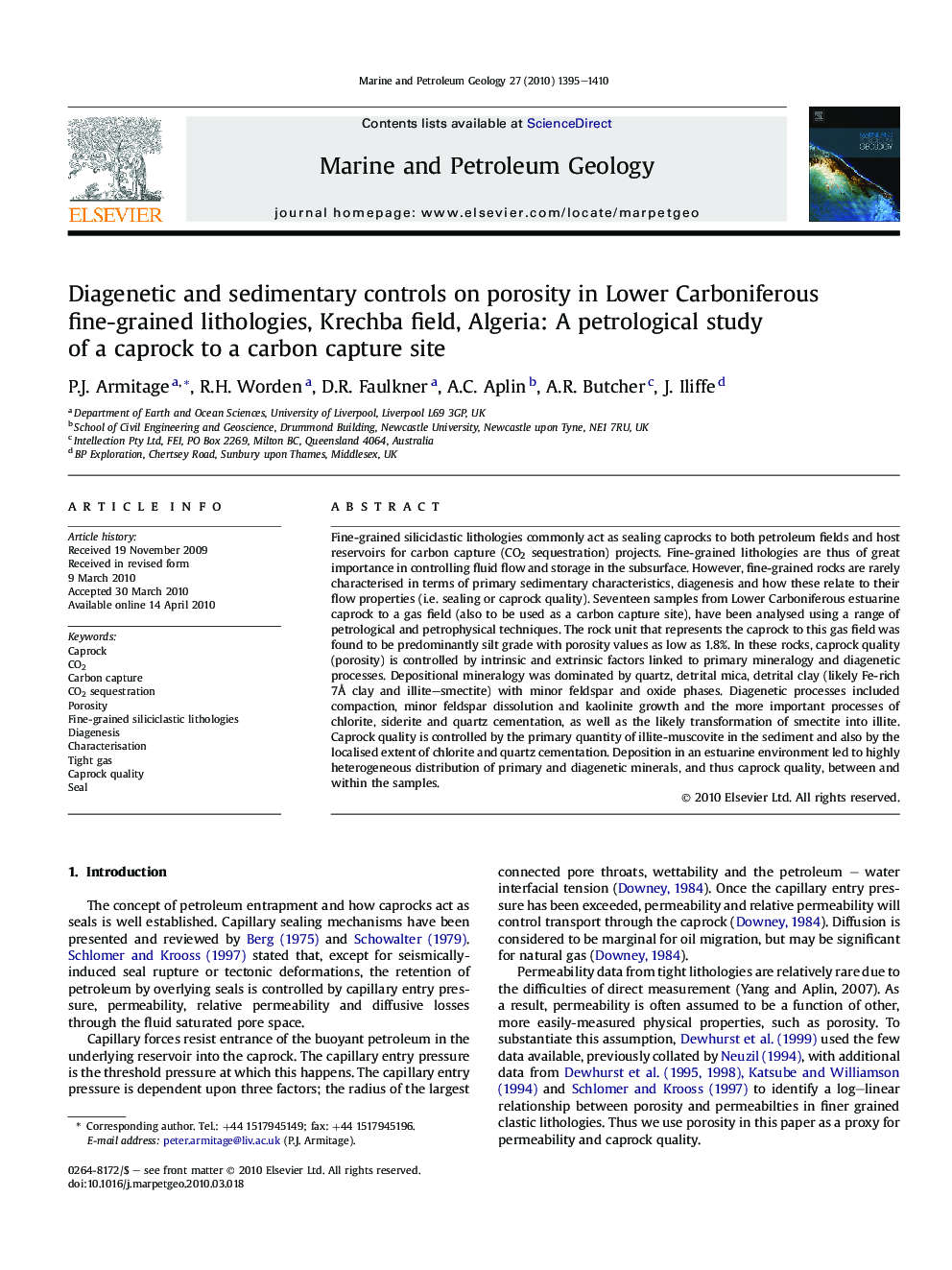| Article ID | Journal | Published Year | Pages | File Type |
|---|---|---|---|---|
| 4696212 | Marine and Petroleum Geology | 2010 | 16 Pages |
Fine-grained siliciclastic lithologies commonly act as sealing caprocks to both petroleum fields and host reservoirs for carbon capture (CO2 sequestration) projects. Fine-grained lithologies are thus of great importance in controlling fluid flow and storage in the subsurface. However, fine-grained rocks are rarely characterised in terms of primary sedimentary characteristics, diagenesis and how these relate to their flow properties (i.e. sealing or caprock quality). Seventeen samples from Lower Carboniferous estuarine caprock to a gas field (also to be used as a carbon capture site), have been analysed using a range of petrological and petrophysical techniques. The rock unit that represents the caprock to this gas field was found to be predominantly silt grade with porosity values as low as 1.8%. In these rocks, caprock quality (porosity) is controlled by intrinsic and extrinsic factors linked to primary mineralogy and diagenetic processes. Depositional mineralogy was dominated by quartz, detrital mica, detrital clay (likely Fe-rich 7Å clay and illite–smectite) with minor feldspar and oxide phases. Diagenetic processes included compaction, minor feldspar dissolution and kaolinite growth and the more important processes of chlorite, siderite and quartz cementation, as well as the likely transformation of smectite into illite. Caprock quality is controlled by the primary quantity of illite-muscovite in the sediment and also by the localised extent of chlorite and quartz cementation. Deposition in an estuarine environment led to highly heterogeneous distribution of primary and diagenetic minerals, and thus caprock quality, between and within the samples.
